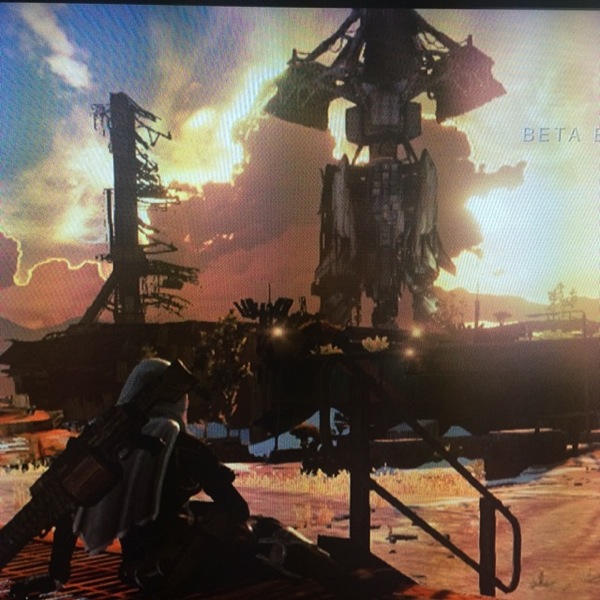-
Oh, awesome: a Pinboard Share extension for iOS 8.
-
New Danny Macaskill video: off-road (off ALL the roads) in Skye. Remarkable. Also: so much dronecam in biking videos now. (Nicely shot, thoguh).
-
Really, really useful: a tool from @mnot to test headers, caching, and responses to webpages. Will be using this a lot in future, am sure.
-
"The water that falls on you from nowhere when you lie is perfectly ordinary, but perfectly pure. True fact. I tested it myself when the water started falling a few weeks ago. Everyone on Earth did. Everyone with any sense of lab safety anyway. Never assume any liquid is just water. When you say “I always document my experiments as I go along,” enough water falls to test, but not so much that you have to mop up the lab. Which lie doesn’t matter. The liquid tests as distilled water every time." A truly lovely short story from John Chu.
-
The most useful tips in here: set the right headers; set the body of the response to an enumerator and it'll iterate over it, streaming it.
-
Some great Chess writing from Slate.
-
"‘If all that survives of our fatally flawed civilization is the humble paper clip, archaeologists from some galaxy far, far away may give us more credit than we deserve,’ the design critic Owen Edwards argues in his book Elegant Solutions." An excerpt from a Joe Moran essay on the paperclip.
-
"pup is a command line tool for processing HTML. It reads from stdin, prints to stdout, and allows the user to filter parts of the page using CSS selectors.
Inspired by jq, pup aims to be a fast and flexible way of exploring HTML from the terminal." That looks great.
-
"Something that journalists sometimes do is publish a disclosure statement. It’s sort of like an About Me page except it’s a listing of all their conflicts of interest—all the areas of coverage where you might have good reason to think they should not be trusted. It’ll say things like I once worked at Google or I’m married to an employee of Microsoft. I have never written one of these but I have fantasies about doing a comprehensive one. It would be the length of a novel, I think. An endless and yet incomplete litany of all the blood, privilege, history, and compromise on my hands." I could have quoted lots of this, but I chose this. It's good. It encapsulates the beginnings but not ends of lots of thoughts, and reminds me why, right now, I'm afraid of assuming anything about anything, why stereotyping "big companies" as being identical isn't just inaccurate but also unhelpful, and why the point of boundaries is that they always exclude _somebody_.
-
"Hatoful Boyfriend is the Fifa of pigeon romance and you should buy it for that reason alone." I'm loving the attention Hatoful Boyfriend is getting in the media; this review by Grant Howitt is charming, informative, and on the Guardian website. Brilliant.
-
Cracking interview with George Saunders, from 2011 (so pre-Tenth of December). Lots about the craft of writing, and about what Just Turning Up looks like. Also, his imaginary writing class in which Hemingway punches everybody out made me laugh out loud.
-
"Of course this is pure anthropomorphization. Bits don’t have wills. But they do have tendencies." This piece by Kevin Kelly is great – though this line neatly explains my suggestion that 'things' sometimes have 'desires' better than I ever have before.
-
Good to know SES can just be integrated as an ActionMailer delivery method.
-
"When we first did this, however, we forgot to make the horse stop acting like a horse. Pretty soon there was a rash of server crashes because the horse inside the player was wandering around, picking up the stuff it found inside the player, rifling through the player’s backpack and eating things it thought were edible, and eventually, wandering “off the map” because the player’s internal coordinate system was pretty small, and the edges weren’t impassable." Games programming, folks.
Sitting in the Cosmodrome
30 July 2014

That’s me, sitting on the ground in the Cosmodrome in Old Russia.
The Cosmodrome is an environment from Bungie’s Destiny. I played it during its public beta last week.
One of my favourite things in Destiny is its sit down button.
The directional pad is used to ’emote’ in a very limited manner in the game. Two of the emotes are very specifically non-verbal forms of communication, useful for players without headsets: you can wave, either into space or at another player, and you can point. I used these quite a lot with both strangers and friends.
One of them is daft self expression: the dance button. This is probably the most popular emote; it feels like many players hadn’t played enough MMOs to have had their fill of daft emotes, and so the idea that one can just dance – not just on your own, but with other people – for no reason other than you’d like to is a new and exciting one.
It’s actually how dancing ought to be, when you think about it: a fun thing you can do whenever. There was lots of dancing in Destiny.
My absolute favourite emote, though, is sitting. And the main reason for that is the sitting down animation.
If pushed, I’ll take the female sitting down animation over the male one for one simple reason. Male characters look more like they’re sitting down to kill time, staring either into their hands, or just above them – it’s hard to tell, and it feels critical. It’s how you might sit by a campfire with friends (if you were looking up) or in a dreary queue for a gig or festival (if you’re looking down).
The female characters, though, always look like they’re sitting down to look at something. Which is so apt, for Destiny; the skyboxes and vistas the game presents (when it’s not throwing Dregs and Thralls at you) are beautiful. They’re the sort of things you want to take in with friends; pass time watching the day-night cycle. I love seeing the massed Guardians in the Tower, all sitting at the edge, watching the clouds roll across the sky. What are they doing? What are they talking about in their Fireteams and Private Parties?
The idea that sitting is active – that you might sit to do something with your friends, not to indicate an absence of activity – is a lovely thing to be reminded of. It applies tenfold – no, far more, hundredfold at the very least – to the world outside Destiny.
I like that my Guardian reminds me of this every time she sits down.
But sitting down also had a functional purpose for me: I’d also sit down in Destiny to indicate I’d wandered away from my games console.
There’s no pause button in Destiny – it’s always online – but there are enough quiet areas of a map, especially when you’ve cleared out enemies, that you can just sit down and wander away with few ill results. You might even discover how lenient Destiny’s respawning is (as long as you’re not in a Darkness zone).
I was playing with some New York friends at the weekend. They were playing pass-the-pad, and I was on my own. They didn’t have a headset, so we IM’d on our phones to explain the things we couldn’t show with a point or a wave.
“Could we pause 30 secs while I put the kettle on,” asks my friend. And why not? There’s nothing around threatening. I say that I’ll go and do the same and wave when I’m back.
I push down on the d-pad, and I/my Guardian sit(s) down for a break. I wander into the kitchen to make tea and toast.
I’d been meaning to write about how much I liked the sitting in Destiny – the “looking into space” aspect of it. And today, somebody else reminded me the other reason that its sitting felt important to me.
She’s entirely right to be annoyed. Reading her post, I recognised a kind of bad behaviour it’s easy to slip into – and remembered what I used to do about it.
I know that whilst online games of all shapes and sizes encourage you to keep playing – and have no pause button – they also have a reasonable number of safeguards against it in their systems. Or, at least, they should. World of Warcraft has towns, safe from attack; PVE servers, where other players aren’t a threat. Lots of ways to park your character (although not, say, in dungeons or raids, just as all the multiplayer shooters I played lock you in for the scope of a single game). I had no idea how anybody played on a PVP server – it seemed to require permanent, always-on concentration.
Back in the months I played WoW, whenever I wandered away or alt-tabbed for a bit, I’d make sure my character sat down, showing the world they were absent. A little bit of playacting – something better than afk.
I’m glad it still works in 2014.
You can do it almost anywhere. Take a step back. Find a quiet corner. Down on the d-pad. Your Guardian will sing a campfire song, and you can sign that rental agreement, hold the step-ladder to the loft, and talk to your relatives on the phone.
Sit the heck down.
-
"keep some parts of myself severely to myself, am thus able to maintain a deep fruitful disjunction between this real world & the real real world." (and: of _course_ the "Robin" commenting on MJH's blog is Robin Sloan)
-
"The lineage of luxury in art – from lapis lazuli, to bronze casting, gold plating or diamond encrusting – extends now to graphics cards, ray-tracing, skin rendering, reflection mapping and to processor speeds, hyperthreading, render farms and the complex world of outsourcing, government subsidies or mineral extraction. It’s important and interesting! Curators take note!" This is good / the Ed Atkins also sounds good.
-
Bookmarked for reference – Dan's lists are usually good.
-
Beautiful. (via Denise).
-
"King Lear would have killed it in Silicon Valley." More Maciej, and yes, it's great.
-
These are also good. And funny.
-
Seems like a reasonable set of tools to help out with this.
-
"MailCatcher runs a super simple SMTP server which catches any message sent to it to display in a web interface. Run mailcatcher, set your favourite app to deliver to smtp://127.0.0.1:1025 instead of your default SMTP server, then check out http://127.0.0.1:1080 to see the mail that's arrived so far." Useful!
-
"The reason I am able to make Twitter bots is because I have been programming computers in a shitty, haphazard way for 15 years, followed by maybe 5 years of less-shitty programming. Every single sentence in the big preceding paragraph, every little atom of knowledge, represents hours of banging my head up against a series of technical walls, googling for magic words to get libraries to compile, scouring obscure documentation to figure out what the hell I’m supposed to do, and re-learning stuff I’d forgotten because I hadn’t used it in a while." This paragraph also represents my experience of both programming and how I write my toys; a slightly round-about set of experience to get to where we are now, with lots of reading the manual and doing things in dumb ways occasionally. Programming!
-
Yep, this all seems like a very good list to me. Filed away for the next time I have to do anything with maps.
-
Enjoyed this a lot: Kim Stanley Robinson on California, SF, and the relationship between the two. For me, timely.
-
"In this film I wanted to look beyond the childish myth of ‘the cloud’, to investigate what the infrastructures of the internet actually look like. It felt important to be able to see and hear the energy that goes into powering these machines, and the associated systems for securing, cooling and maintaining them." Looks beautiful: Timo's customary look in enveloping, three-screen 4K. Gosh. Also: the uses of stills-as-film is really interesting to me at the moment.
-
"One-thousand dollars invested at a 20% discount with 5% interest (calculating interest every 3 turns, but simple, not compounding interest) means a player will have starting debt of $1000. After three turns the debt is $1050, 6 turns is $1100, 9 turns is $1150, etc. Totally manageable. The banker is your friend and wants you to succeed."
-
A lovely game – almost a poem, but definitely Enough Game – by Holly Gramazio, about being a blackbird in a city. It made me feel many things, which is what the best writing does. Also, I shall now probably play it again.
-
"We foresee an amazing future where not only can your household devices communicate with each other, they can also communicate with us over the same Internet lines. How cool would it be if your fridge could post a Medium here on Medium every time it needed you to buy more milk? And that’s just one idea." There are many more ideas in this post.
-
Adam Saltsman on Vanquish. This is good.
-
Using Sketchup as your modeller, and a few other neat things. Bookmarked for reference.
-
"It took awhile to climb this mountain, 14 months actually. So to “show our work”, we’re posting around 45,000 words that mark the trail we took. It’s not every text, skype call or even every email in our big 500+ email thread. But it’s the important stuff, and a lot of it was important to getting Threes out in the world." I'd pay for this as a book, to be honest. Really excellent stuff.
-
Really nice tutorial on 2D visibility polygons – a series of interactive demos that illustrates a point very well.
-
"If you're reading this in 2015 and no one remembers what Flappy Bird was, then I want to emphasize one thing:
In February 2014, there was not much controversy for many game developers, especially indie game developers — the internet was harassing Dong Nguyen for making a game, which is unacceptable. Many people do not support how Nguyen has been treated, and have said so. It is always important to remember resistance to a mob."
First Read / Second Read
30 January 2014
Drinking a beer having finished playing records at the last Wild Rumpus, I got talking to Cara. She asked me a difficult question. Later, she would write this up in her embedded look at the London indie scene, and make me sound more profound than I think I did. It’s a very good article; you should go and read it.
Still, with the advantage of time, I wanted to write down the two things I said to her for posterity, because they’re worth bearing in mind, and I want to remember them for myself.
Disclaimer: like so many of the so-called “smart things” I’ve ever said, this is basically a Matt Jones paraphrase.
Jones once explained, talking in the studio one day, a theory that had come from car design: First Read / Second Read.
What I remember him saying:
to design a really memorable car, you need a strong first read. A really strong first read. That’s the single shape, barely a single line that you remember at a glance. Like this:

You know what car I’m showing you already.
But: it’s not enough to have a strong first read. Then, when you’re closer, or double-taking, you need a strong second-read: that detail echoed, firming up the original shape, but making the coherence clear:

And then, on the third read, once you’ve encompassed the detail therein, you still need something to satisfy the eye: details to take in, subtleties and shapes.

The Beetle is an obvious way of showing this, but it really works: it’s not just that strong first read that makes the Beetle so beautiful; it’s the strong first, second, and third reads all co-existing at once that make it work quite so well. Detail that you never get sucked into won’t work; a striking first impression that goes nowhere won’t work.
And Jones, astute as ever, would point out this applied to many forms of design: often, getting the strong first read would be hard, sucking someone into the detail we’d made – but sometimes, you’d also have to focus on backing up that first read with detail.
(Fashion does this well, for instance – the emphasis on understanding form often coming from a silhouette, and then the eye taking in more than just the outline.)
I think the best games do this. Cara mentioned the FPS example, but to be frank, it applies to anything: card games; beat-em-ups; sports; real-time-strategy. The first read has to be clear, broad: grokkable, and also aesthetically enticing. Once enticed, you need that detail to repeat, to be fractal, to be backed up by substance. And then, as you delve deeper, into expertise and experience, there’s still depth to reward you, but it never clashes against that first read you had, the thing that sucked you in.
As I write that, I realise: it’s not so far from MDA. But I’m aware I can get a bit hardline about MDA, and actually, first/second/third read speaks to everything: that moment you discover depth in the aesthetics of a game that echoes the surface; or similarly, a first read of why a mechanic is fun (‘we’re all sharing the same resources, but have our own goals!‘).
I suppose the real point is: designing for depth is not about neglecting the surface. It’s about leading the player on that journey to expertise, satisfying them at all turns of the path. It’s no surprise my favourite beat-em-ups are both simple on the surface and the most beautiful. It’s no surprise my favourite card games have the simplest surface rules, but a deep path to expertise, usually based on inter-personal interactions – fakeouts, Yomi.
I used to say that I really liked the idea of being able to recognise a game at 20ft – you see someone with a phone on the Tube and you just know that they’re playing something different that far away. Is it through the aesthetic? Is it through how they interact? I don’t know – it doesn’t matter. What matters is that you can read it that far away. And then, you get closer, and you want to read more detail: not just clearer graphics, but also clearer interactions, clearer mechanics. We start to suck players in when they see a screen in a friend’s house and say “What’s that?” And that’s the real challenge, I reckon: designing that path in.
There’s another side to this question though.
The original question Cara asked me, standing in BL-NK, was “As a games designer, what do you want players to do?”
I thought for a bit, and said: well, follow the rules, of course. Play the game as intended, and enjoy it. Then, I realised that was the wrong answer. So I correct course.
Because what I’ve learned about some of the best games I’ve worked on, designed, or played, was that they design well for failure states. I’ve designed games that were fun if you played them right, but terrible if you didn’t get the rules.
They were not good games.
By contrast, games that are great if you play as the designer intended – but also great if you play them your way, if you get lost in the components and the systems and recompose them in some other form that still excites and entertains you: well, that’s good too.
Good games are resilient. This is why people sometimes have house rules for Mario Kart, for Catan. This is why people play in large sandbox games without completing missions. This is why RPG GMs will throw the rulebook out to tell a better story.
So I said that, first of all – that I’d like to design for resilience.
And then I added an addendum: whilst it’d be good if games were resilient to misinterpretation, to being played with, the best games afford that but you rarely go down that path, because they lead you on this great journey, from surface read to deep expertise (and frequently back out again, as you show a new friend the surface of a favourite game).
And I told a story about the Volkswagen Beetle.